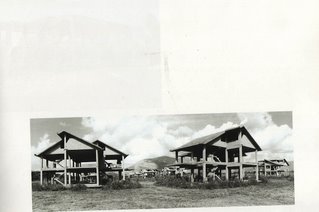Do you want to ring up your husband?
No.
I'm ringing up your husband.
Oh.
Who is your husband, not your old husband, your new husband? Dougie's your new husband, right? Oh here he is, your husband. Quick talk to him!
Hello, who is this?
It's your new husband! Your new husband! Your new husband! Oh look give give me the phone. Hello Dougie are you there? How are ya? Look, the wife just wanted to talk to you cos she's so much in love. Look I'll see you later, I've got some rolls for you. Here, talk to your new husband (tries to give her the phone, she pushes it back, he tries to give her the phone. She takes it reluctantly) No, he wants you. Look, tell him you love him, Tell him, your new husband, you love him. Oh give me the phone. Dougie? What's that? Bring the wife over? Yes. I'll bring the wife over. What's that? You're already married Dougie, you're already married. Look, I'll bring the wife over she's going to have veal parmigiana and then she'll be right over here I'll put your wife back on (He hands her the phone).
Ask him how much he loves ya! Get him to tell you how much he loves ya!
He says he wants to know where the honeymoon is, when's the honeymoon?
Ask him where he's taking you for the honeymoon!
He says he's taking me to Geelong.
Do you want me to talk to him again?
No, he's your husband, you talk to to him. He wants you, not me. He wants you.
No, he says he wants you.
What?!
You're going to bed?
Give me the phone! You're going to bed with the wife Dougie is that right? You tell her so she'll understand here. And then we'll hang up.
Oh (she talks on the phone).
What?
Veal Parmigiana.
Yes. Yes. Yes. Yes. What? He wants you.
No, he wants you.
Ask him how much he loves you.
Hello, can you hear me? Do you want to speak to him?
No he doesn't want to speak to me, he wants you.(She hangs up phone).
We're going to fatten you up for the jig a jig wth Dougie. Now, you promise to go and see and your husband tonight?
He wants to see you.
No, that's not the point, you can do things for him that I can't.
(They sip on Camparis)
He's alright Dougie, a nice bloke Dougie, I approve of your husband. I approve of your husband. Alright darling, we're going to feed you then take you to your husband for a night of mad passionate love. Mad passionate love. Alright? Enjoy your night of mad passionate love with Dougie.
Who's Dougie?
Your new husband, Dougie.
I don't want him.
Whatd'ya mean you don't want him, you're married to him, you made a promise at 67 Grover Road. I was best man at the wedding. Ask Dougie.
(This is a transcript of an actual conversation that I recently overheard in the pub. The couple were in their mid 60s, each carrying a large red white and blue homeless-person bag. The phone was a very sleek, new Nokia.)








